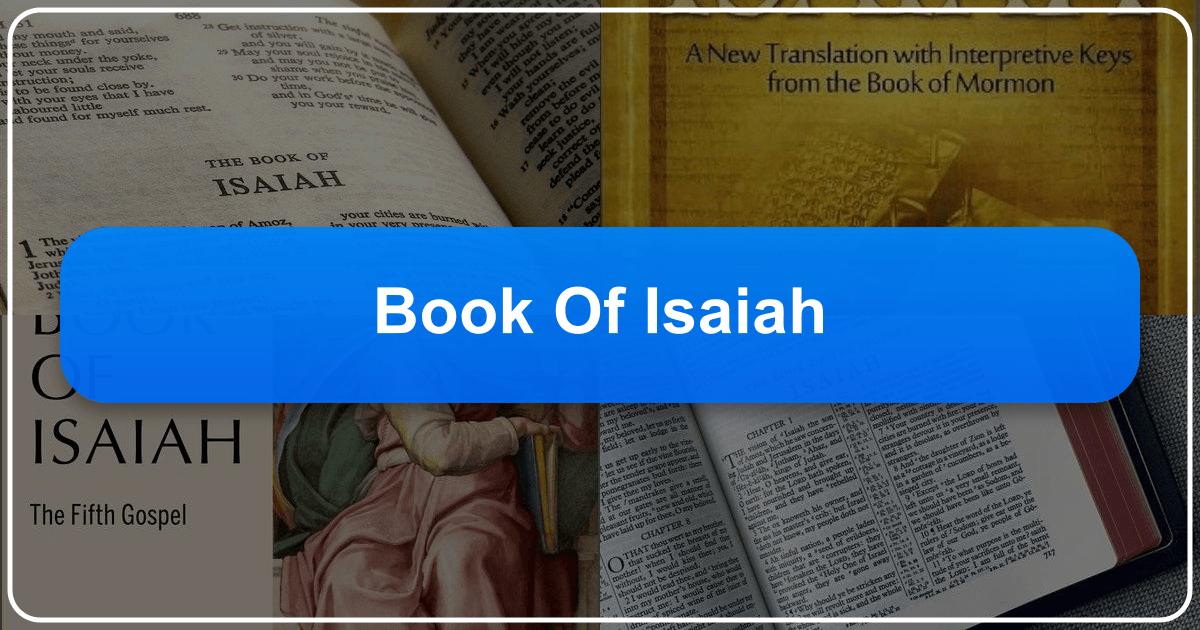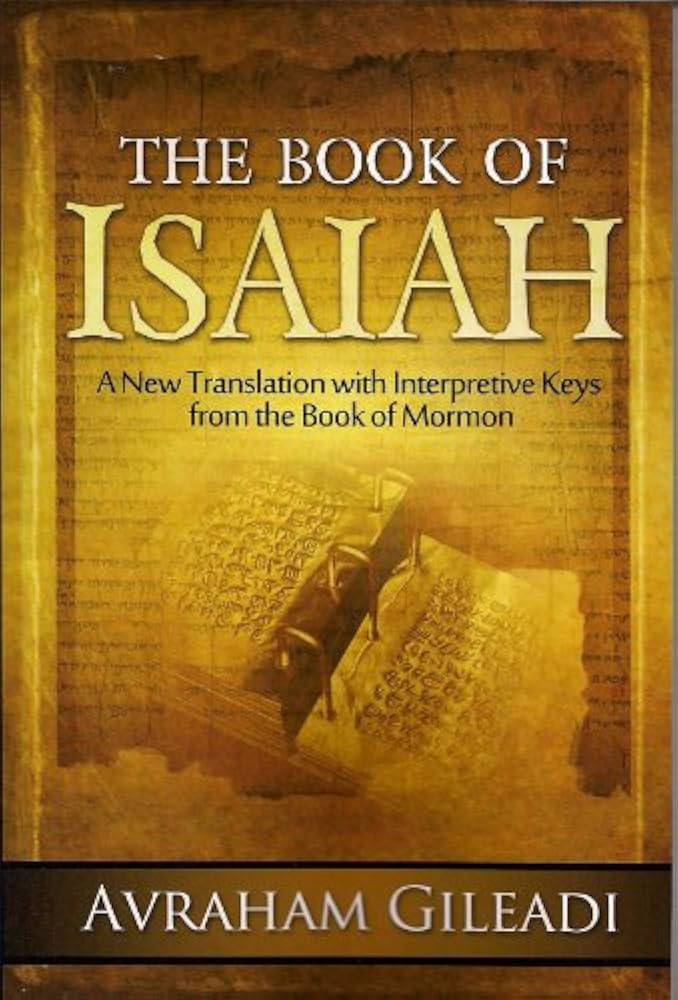The Book of Isaiah: A Comprehensive Exploration

The Book of Isaiah, whose Hebrew name, Yesha‘yahu, means “the Lord Yahweh saves,” stands as a cornerstone of the Hebrew Bible and a pivotal text in the development of Judeo-Christian thought. Written between 739 and 681 BC during the reigns of four Judean kings—Uzziah, Jotham, Ahaz, and Hezekiah—Isaiah’s prophecies extend far beyond his lifetime, resonating profoundly with readers across millennia, even to the present day and beyond. This exploration delves into the Book of Isaiah, examining its multifaceted aspects through the lenses of genre, authorship, educational value, historical context, and lasting cultural impact.
II. Genre and Literary Style: A Tapestry of Voices
The Book of Isaiah defies simplistic categorization. It is not solely a book of prophecy; rather, it’s a rich tapestry woven with diverse literary threads, showcasing Isaiah’s exceptional mastery of Hebrew poetic and theological expression. The text seamlessly interweaves various genres, including:

-
Prophetic oracles: These pronouncements, often filled with vivid imagery and symbolic language, convey God’s judgment on the sins of Judah and surrounding nations, alongside promises of future redemption and restoration.
-
Lyric/Hymnic poetry: Particularly prevalent in chapters 40-55, this style mirrors the eloquence of enthronement psalms, employing cumulative eloquence, personification, triads, imperatives, and rhetorical questions to amplify Isaiah’s message. The imagery shifts from natural scenes to human figures, reflecting the evolving theological themes.
-
Narrative accounts: Two significant historical narratives punctuate the prophetic pronouncements. Chapters 6-12 detail Isaiah’s confrontation with King Ahaz, highlighting the king’s lack of faith and the prophet’s bold rebuke. Chapters 36-39 narrate the Assyrian siege of Jerusalem under Hezekiah’s reign, emphasizing the king’s faith and the subsequent divine deliverance.
-
Legal pronouncements: Isaiah’s prophecies aren’t merely pronouncements of doom and salvation; they also contain ethical and legal directives. He repeatedly calls Judah to justice and righteousness, condemning social injustices, oppression, and idolatry, urging the people to align their lives with God’s ethical standards.
Isaiah’s linguistic virtuosity is a striking feature of the book. The text displays:
-
Unparalleled vocabulary: The sheer breadth of Isaiah’s vocabulary is remarkable, showcasing a command of Hebrew unparalleled in other biblical books. This richness contributes significantly to the text’s nuanced expressions of both judgment and hope.
-
Masterful use of poetic devices: Isaiah displays a masterful command of Hebrew poetry, employing various formal devices such as parallelism, imagery, and wordplay to enhance the emotional and intellectual impact of his message.
-
Intricate wordplay and similes: Isaiah frequently utilizes wordplay and striking similes to make his points memorable and impactful. Examples abound, such as the lodge in a cucumber field (1:8) or a child in a sparse forest (10:19).
The shifting styles and vocabulary throughout Isaiah are not contradictory but rather reflect the evolving historical context and the multifaceted nature of God’s relationship with His people. The consistent thread that binds these diverse elements is Isaiah’s unwavering commitment to proclaiming God’s truth, be it judgment or salvation. The recurring use of “the Holy One of Israel” as God’s name, along with other recurring motifs like “the highway” and “the banner,” underscores the thematic unity underlying the stylistic variations.
III. Key Characters and Their Roles
The Book of Isaiah features a cast of significant characters whose actions and interactions shape the narrative and illuminate the theological themes:
-
Isaiah: The prophet himself emerges as Yahweh’s devoted spokesperson, directly called to convey God’s message to Judah (Isaiah 6). He maintains privileged access to the Judean kings, boldly rebuking them while also sharing God’s promises of comfort and hope.
-
King Ahaz: Featured prominently in chapters 6-12, Ahaz exemplifies a lack of trust in the Lord, refusing counsel and even a divine sign (Isaiah 7). His actions serve as a stark contrast to the faith shown by other characters.
-
King Hezekiah: The central figure in chapters 36-39, Hezekiah demonstrates profound faith, prayer, and reliance on the Lord for deliverance from the Assyrians (Isaiah 36-39). However, Isaiah’s account also points to Hezekiah’s eventual self-interest and its consequences for the future of Judah.
-
Cyrus the Great: This Persian king, mentioned in chapters 44-45, is portrayed as the Lord’s instrument for the restoration of Jerusalem and the subjugation of nations (Isaiah 44-45). His historical role in liberating the exiles aligns with Isaiah’s prophetic pronouncements.
-
The Suffering Servant: This enigmatic figure, the subject of four songs (Isaiah 42:1-9; 49:1-13; 50:4-11; 52:13-53:12), is a humble leader appointed by God to suffer on behalf of His people. This figure finds its ultimate fulfillment in Jesus Christ, connecting the Old Testament prophecies to the New Testament narrative.
IV. Narrative Structure and Theological Themes
While not possessing a single overarching plot, the Book of Isaiah follows a typical Prophetic Book structure, transitioning from pronouncements of judgment to promises of redemption. Key theological themes emerge from this structure:
-
God’s judgment and the need for repentance: Isaiah powerfully portrays God’s righteous judgment against the sins of Judah and other nations. The repeated calls for repentance highlight the urgency of turning from sin and embracing God’s grace.
-
The promise of redemption and restoration: Alongside the warnings of judgment, Isaiah offers compelling promises of God’s redemption and the restoration of His people. This hope of future renewal permeates the text.
-
The universal scope of God’s plan: Isaiah’s prophecies aren’t confined to Judah alone; they encompass the known world, emphasizing the universal reach of God’s judgment and His plan for salvation.
-
The Messiah and salvation: Isaiah’s prophecies about the Messiah and salvation are among the most significant in the Old Testament. They foreshadow the coming of Jesus Christ, providing a rich tapestry of predictive imagery concerning his life, ministry, suffering, death, and ultimate triumph.
-
The importance of justice and righteousness: Isaiah consistently emphasizes the ethical dimensions of faith, condemning social injustices and urging the people to live in accordance with God’s moral standards. This theme resonates powerfully with contemporary readers concerned about social justice issues.
The two major narrative sections highlight these themes through the contrasting experiences of Kings Ahaz and Hezekiah. Ahaz’s lack of faith in God’s ability to protect Judah leads to consequences, whereas Hezekiah’s faith brings deliverance. The story of Hezekiah also subtly foreshadows Judah’s eventual fall, reminding readers that divine grace doesn’t negate human responsibility. The prophecies about Cyrus and the Suffering Servant further expand the scope of God’s plan, revealing its universal reach and redemptive power.

V. Cultural Impact and Legacy
The Book of Isaiah’s enduring influence on religious thought, literature, and culture is undeniable:
-
Theological influence: Isaiah’s prophecies have profoundly shaped Judeo-Christian theology, particularly in understanding the nature of God, the nature of sin, the concept of the Messiah, and the hope of salvation. Passages from Isaiah are frequently cited and interpreted in the New Testament in connection with the life and ministry of Jesus.
-
Literary influence: The Book of Isaiah’s poetic beauty and powerful imagery have inspired countless writers and artists throughout history. Its impact can be seen in various literary works, musical compositions, and visual art.
-
Adaptations and interpretations: The Book of Isaiah has been translated, adapted, and interpreted countless times, resulting in a vast array of commentaries, theological treatises, and artistic expressions. These varied interpretations reflect the richness and complexity of the text itself, capable of resonating with diverse audiences and perspectives.
-
Communities and traditions: The Book of Isaiah continues to be central to the liturgical and devotional practices of Jewish and Christian communities, providing both theological reflection and spiritual inspiration. Its prophecies continue to be studied, debated, and applied to contemporary life, underscoring its relevance and enduring power.
In conclusion, the Book of Isaiah is a complex and multifaceted work that continues to challenge and inspire readers. Its diverse literary forms, compelling characters, and profoundly insightful theological themes have exerted a lasting impact on religious thought, literature, and culture for centuries, assuring its place as a seminal text within the biblical canon and beyond. Further exploration through scholarly resources and careful reflection on its enduring messages will undoubtedly enrich one’s understanding of this remarkable book. For a deeper dive into the historical and theological context, readers are encouraged to consult the resources available at Lbibinders.org.